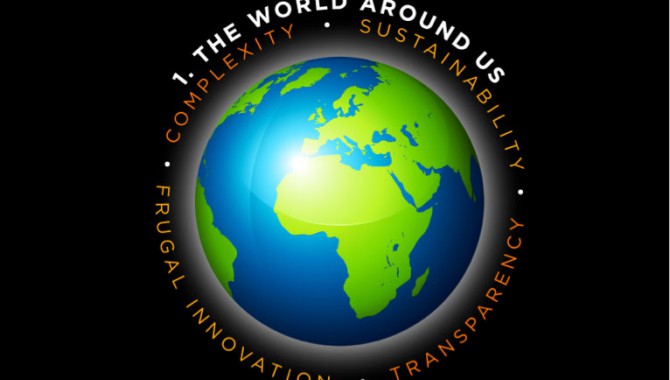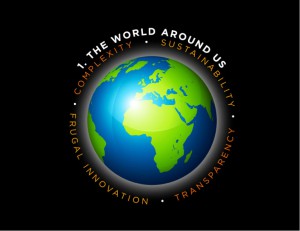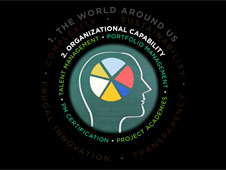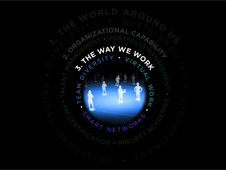
Complexity, sustainability, transparency, and frugal innovation are shaping the global context for projects today. Credit: NASA APPEL
February 29, 2012 Vol. 5, Issue 2
What can we learn from studying global trends in project management?
As part of our efforts to anticipate future needs, in 2008 we began tracking trends in project management. This effort included an extensive literature search as well as personal conversations with practitioners and thought leaders around the world affiliated with organizations such as the Project Management Institute (PMI), the UK-based Association for Project Management (APM), the International Project Management Association (IPMA), and the International Centre for Complex Project Management (ICCPM). We presented our first-year findings at the NASA PM Challenge in February 2009, and this became an annual activity.
After three years, we assembled a master list of the eleven trends we had identified to date.
When we looked closely at the list for patterns, we noticed that the trends fell into three broad categories of change:
- The world around us
- Organizational capability, and
- The way we work as project practitioners
The World Around Us

Complexity, sustainability, transparency, and frugal innovation are shaping the global context for projects today.
Credit: NASA APPEL
First, let’s consider the world around us. There are four big-picture trends shaping the global business environment for project-based organizations.
- Complexity. Complexity means different things to different people, but just about all spaceflight projects at NASA meet any definition. As projects become larger and involve more international and cross-sector partnerships, the project manager has to play a more active role in developing and maintaining support from a wide range of stakeholders. Since complex projects often have long time horizons, leaders need to sustain their projects through changing political, social, and economic circumstances. The skills required to succeed in this environment go beyond the traditional project management domains of cost, schedule, and technical performance. Organizations have to find new ways to give their project managers the knowledge and skills to deal with this dynamic environment. Our own framework for thinking about complexity in terms of technical, organizational, and strategic dimensions suggests that project-based organizations often underestimate the effects of organizational and strategic complexity. NASA engineers are world-class experts at finding ingenious solutions for technical problems. It is less clear how to work effectively with other organizations or stakeholders to achieve mission success.
- Sustainability. Sustainability has arrived as a permanent feature of the landscape for project-based organizations. While some use sustainability as a synonym for environmentally friendly, others interpret it more broadly to refer to principles and practices that enable long-term societal progress. Sustainability is above all a systems thinking challenge. Project management has taught aerospace project managers to think about life-cycle costs. Sustainability tackles questions of life-cycle impact, which can extend far beyond the duration of a project. In 2009, our organization partnered with the Office of Strategic Infrastructure to hold NASA’s first Green Engineering Masters Forum. This coincided with President Obama signing an Executive Order that set sustainability goals for all federal agencies. Based on the success of that forum, we went on to develop a full-length training course on green engineering and hold other learning events on sustainability in government organizations.
- Transparency. Projects exist in a more transparent, networked environment than in the past. President Obama’s open government directive initiated a shift toward government transparency. Thirty-nine government agencies, including NASA, have developed open government initiatives. World Wide Web pioneer Tim Berners-Lee highlighted the work of Data.gov, introducing the possibilities (and controversy) that open data and ideas can offer, from new uses of satellite data to provide relief to earthquake victims in Haiti to WikiLeaks. Managers and leaders are expected to be open about their work. Information and decisions are no longer easily hidden.
- Frugal Innovation. The growing demand for breakthrough technologies in engineering and management has led to the emergence of innovation grounded by cost. The watchwords of this practice are “reuse, repurpose, redesign.” Cost-conscious innovators make use of existing hardware or technologies in novel ways that allow them to achieve ambitious goals with limited resources. Associated with products like the Nokia 1100 and the Tata Nano, this innovation paradigm can be seen in aerospace projects like the Lunar CRater Observation and Sensing Satellite (LCROSS), CubeSats, and Johnson Space Center’s Project M, which sought to put a humanoid robot on the moon.
Organizational Capability
Project-based organizations are also dealing with new trends in management.

The need to achieve the highest standards of professionalism is driving project-based organizations to focus on talent management, portfolio management, project academies, and project management certification.
Credit: NASA APPEL
- Talent Management. As technology, globalization, and system requirements drive us toward ever-greater complexity, there is an increasing worldwide demand for professionals who are highly skilled in the integration of complex systems. These skills cannot be taught in a training course or even a graduate program; they are the result of experience acquired on the job. This means the talent pool of successful, experienced practitioners is limited. Since demand for these skills is high in a global economy, talent is an international commodity that does not sit still. A skilled knowledge worker may have opportunities in Dubai, Shanghai, and Seattle. Talent also crosses sectors more fluidly than ever before: people hopscotch between government and the private sector in search of the best opportunities for growth. Talent management is a shared responsibility. In a project-based environment, both project leaders and senior executives have to address the needs of knowledge workers in order to compete in the global battle for talent.
- Portfolio Management. Portfolio management reflects the context in which project-based organizations operate today. No project exists in a vacuum, and organizational success is not a matter of managing a single project successfully. The larger challenge is managing a portfolio of programs and projects in order to execute the organization’s strategy. Portfolio management is an executive function that calls for decision making about programs and projects based on a strong understanding of the organization’s mission, goals, and strategy. In NASA’s case, the mission directorates function as its portfolio management organizations. These decisions involve allocating talent, funding, and physical capital in order to maintain a balance among portfolios that aligns with organizational needs. The consequences of the success or failure of a project in one portfolio depend on its relative weight, which can be gauged in terms of resources, visibility, and importance to the overall organizational mission. As project-based organizations continue to grow around the world, portfolio management will increase in importance.
- Project Manager Certification. Project-based organizations are under pressure to demonstrate that their project management professionals are qualified to run highly complex and expensive projects. In the federal government, the White House Office of Management set out new project management certification requirements in April 2007. My team spearheaded NASA’s response to this requirement by developing a process for certifying NASA project managers. Certification is likely to grow in importance as project complexity continues to increase around the globe.
- Project Academies. In the fall of 2008, I participated in a meeting with representatives from other organizations that have started their own project academies, including multinational organizations such as Shell, Bombardier, and BAE Systems. At this point, the total numbers are small, but the attention from other organizations since that event has been strong and growing. A second meeting is scheduled for this spring, at which time I anticipate learning about significant progress in building capability through project academies.
The Way We Work
In addition to global and organizational changes, project-based work is also changing at the practitioner level.

The importance of team diversity, virtual work, and smart networks is leading practitioners and teams to adopt new work practices.
Credit: NASA APPEL
- Team Diversity. Diversity has multiple dimensions in a project management context, including cultural, cognitive, and geographic. As projects become more complex, technically challenging, and costly, they also become more globalized, compelling project managers to learn how to lead diverse teams. Skillful management of cultural diversity in teams is crucial to project-based organizations. The future of space exploration hinges upon the ability to collaborate with government space agencies, industry, academic institutions, and nonprofit organizations. Research also shows that project teams thrive on cognitive diversity, which can result from varying levels of education, experience, age, training, and professional background. Geographic diversity poses challenges in developing an environment that facilitates meaningful communication and productivity when team members are not collocated. Once considered a hindrance to effective team productivity, great distances among team members can be managed more effectively than before thanks to advances in technology.
- Virtual Work. The success of geographically diverse teams is closely tied to a project manager’s ability to support a virtual work environment. With a boom in collaborative technologies, the means of communication are no longer an obstacle. While contacting people is no longer a problem, connecting with them is. Virtual work offers project managers the ability to attract and recruit talent from anywhere in the world and decreases project cost. On the other hand, it also threatens effective knowledge transfer, eliminates water cooler conversations, isolates workers, cuts down on managerial support and oversight, and blurs the line between one’s work and personal life. Despite a mountain of research, there aren’t yet definitive answers about virtual work. For now, project managers must take care to document best practices and lessons learned on virtual projects to increase understanding of this type of work.
- Smart Networks. Complex projects are about collaboration, alliances, and teaming—you’re only as good as your network. Today wikis, Facebook, Twitter, and other platforms are rapidly spreading and transforming the way practitioners connect. Cultivating “smart networks” that provide broad streams of information, a global perspective, and sophisticated tools to manage information overload is integral to success.
What do these trends tell us? To put it simply, they require a change in mindset. It’s no longer sufficient to limit our conception of project management to cost, schedule and technical performance. The world around us shapes the context of our projects in increasingly sophisticated ways, and the ground beneath us is shifting even as we write this. I fully anticipate that this will continue for the foreseeable future. Change is the one constant we can count on.
View Ed Hoffman’s presentation on Global Trends in Project Management used at PM Challenge.






